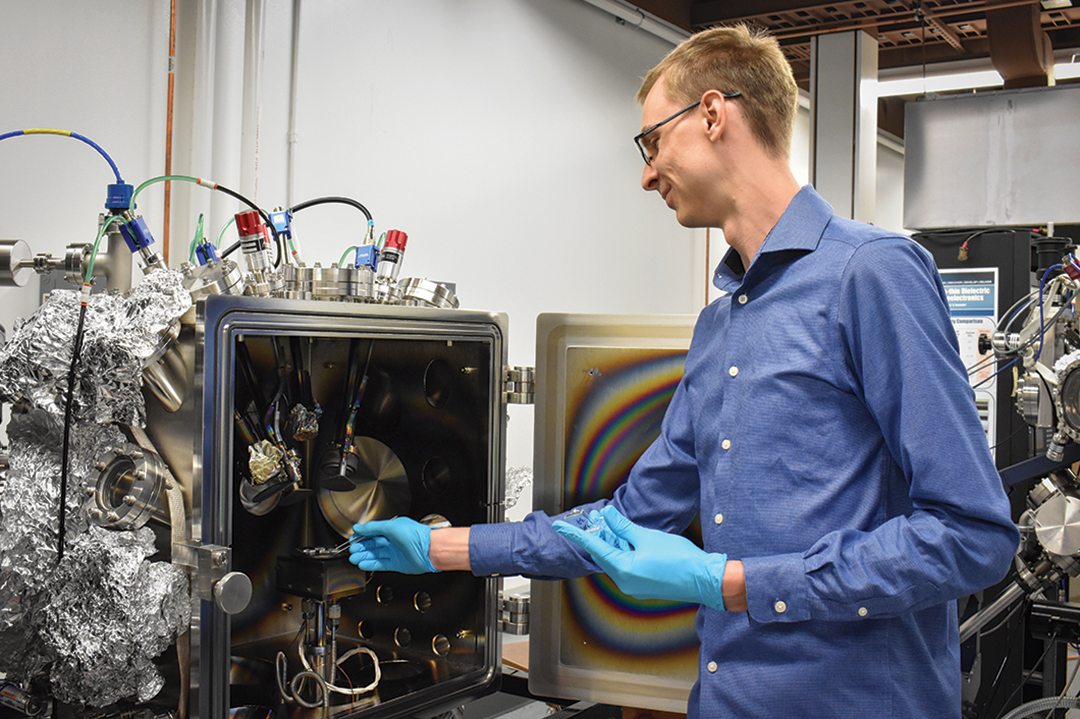
Two UNT researchers saw their work published in Nature's Scientific Reports this summer.
In his paper, Benjamin Sirota -- a Ph.D. student in materials science and engineering -- explains a new method for protecting nanoelectronics that will result in longer-lasting components with better electronic stability.
Sirota, advised by professor Andrey Voevodin, worked with a team of collaborators from the U.S. Air Force Research Laboratory and the National Institute of Standards and Technology. After two years of research, they developed a metal film for nanoelectronics that can be sandwiched with an ultra-thin protective layer.
UNT postdoctoral researcher Saurabh Nene, a research associate with the Center for Friction Stir Processing, published his findings about designing a new steel-like alloy that is five times stronger than conventional steel.
Under the guidance of Rajiv Mishra, University Distinguished Research Professor, Nene works with the Department of Materials Science and Engineering to give the metal its unique yield strength. He created the alloy by combining iron, manganese, cobalt, chromium and silicon through induction melting, casting and friction stir processing.